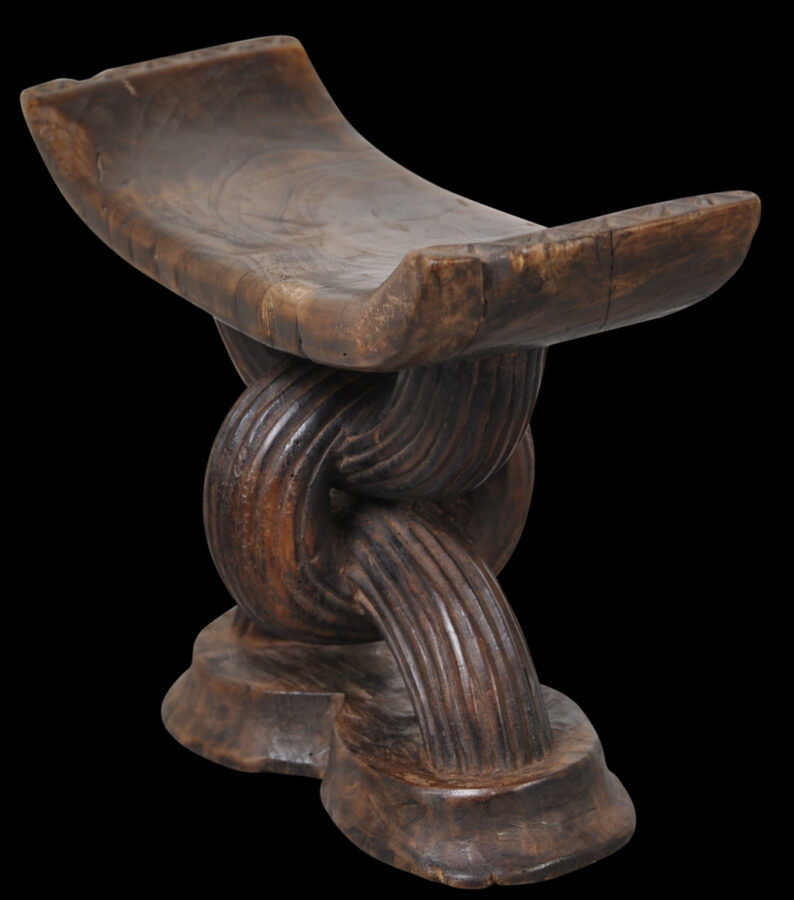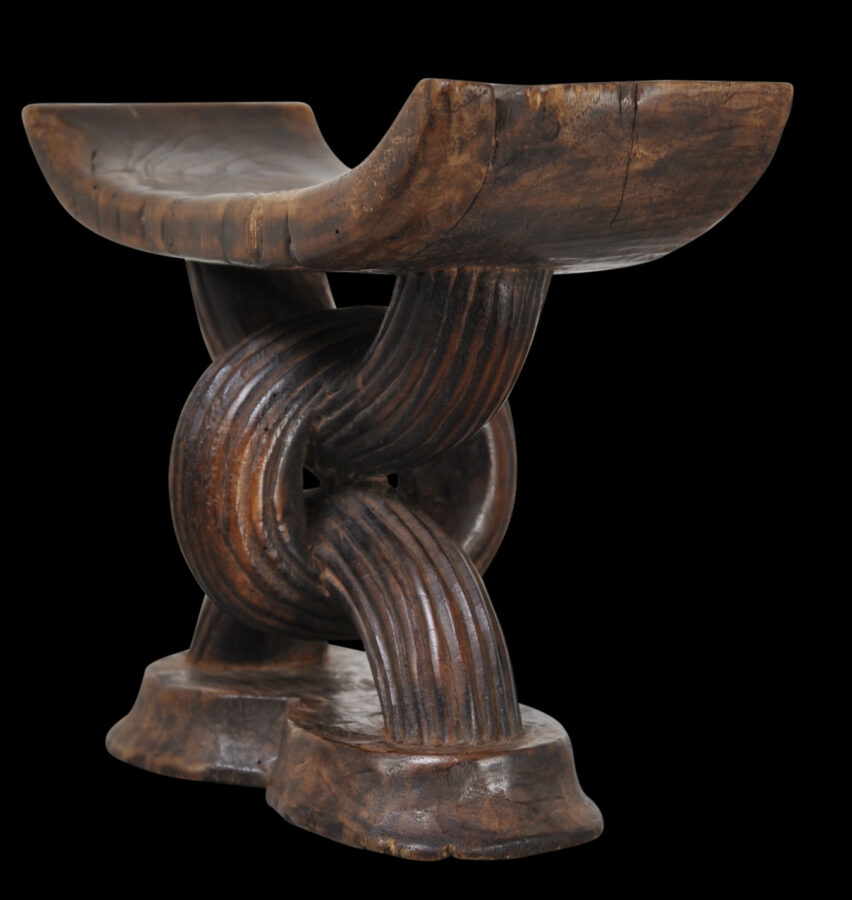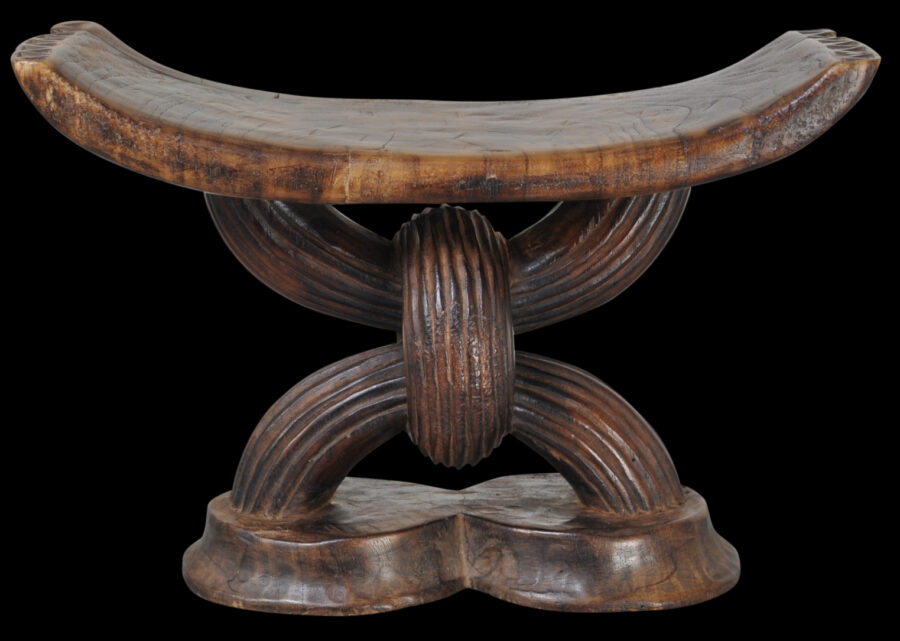This unusual Zulu (and possibly Swazi – a nearby group) headrest has a curved rest on stop and a very decorative mid-section carved as if interlinked chain sections, all decorated in relief with ridged fluting more typically seen on large, dramatic food or tobacco storage vessels. The headrest sits on a base shaped as two co-joined disks.
Examples of Zulu vessels that are decorated with similar ridged fluting are illustrated in Klopper et al (2007, p. 64), Petridis (2011, p. 54-56) and Giblin & Spring (2016, p. 125). Most such examples are dated to the 19th century.
A large Zulu headrest that also incorporates this type of carving work is illustrated in Klopper et al (2007, p. 42).
The headrest includes a ‘native’ repair to a corner which was probably added by the carver himself.
This item was acquired in the UK – many Zulu items are found in the UK on account of the UK having been the colonial power in the area.
It has a good, darkened patina, and is very sculptural.
References
Giblin, J., & C. Spring, South Africa: The Art of a Nation, Thames & Hudson/The British Museum, 2016.
Klopper, S., A, Nettleton & T. Pethica, The Art of Southern Africa: The Terence Pethica Collection, 5 Continents, 2007.
Petridis, C., The Art of Daily Life: Portable Objects from Southeast Africa, 5 Continents, 2011.












